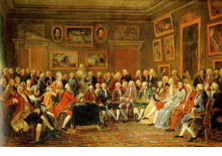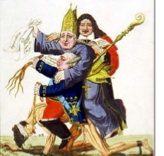Sign up for FlowVella
Sign up with FacebookAlready have an account? Sign in now
By registering you are agreeing to our
Terms of Service
Loading Flow


The Before (background info)
The French people were divided into three crucial social classes. The classes, or estates, acted as a main cause for the volatile social culture of the time. The first estate was the clergy. They acted as 1.5 percent of the population but controlled 10 percent of the land. The second estate was the nobles, .5 percent of the population and held 20 percent of the land. The third estate was the peasants who made up 98 percent of the population and held only 70 percent of land, and was the only social class to pay taxes.
The estates were a mix of impoverished and those with an overabundance of money. However, overall the rich were very rich and the poor very poor. Their diet consisted mainly of bread and bread had gotten incredibly expensive. Some had to resort to stealing in order to feed their families. Those who moderately had the potential to eat without stealing were very often stunted by the impending taxes that were bills mainly footed by the bourgeoisie.
Leading to the French Revolution, there was an era of massive influence, the Age of Enlightenment. This period was about one hundred years before the revolution. The main theme of the era was logic and reason as well as liberty. Many enlightened thinkers created an atmosphere of questioning the monarchy, advocating for change, and searching for alternatives.


